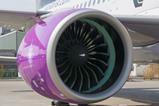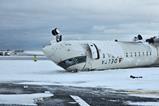Some within the aerospace industry see an opportunity for a third airframer to compete in the large narrowbody market.
Boeing’s 737 Max programme is struggling with broad manufacturing and production quality issues, while Airbus’s A320neo family is hindered – albeit to a far lesser extent – by Pratt & Whitney’s engine recall and general supply chain snags.
For those reasons, and due to the success of its E-Jet family and engineering know-how, Brazilian manufacturer Embraer is considered high on the list of potential entrants into the space.
Though it has recently signalled it will be ready to develop a new business or commercial aircraft within the next two years, Embraer does not appear poised to disrupt the long-running Airbus-Boeing duopoly.
Although chief executive Francisco Gomes Neto recently acknowledged to reporters at the company’s Sao Jose dos Campos headquarters that it has the capability to go bigger, the firm is in no hurry to move up the size range.
“When you look at the wingspan of the E195-E2 and the fuselage of the C-390, we are already making a bigger airplane,” he says.
“We are always studying opportunities not only in commercial, but in all our business units. We believe we can do different products. But at this point in time, we do not have concrete plans to do anything [larger].”
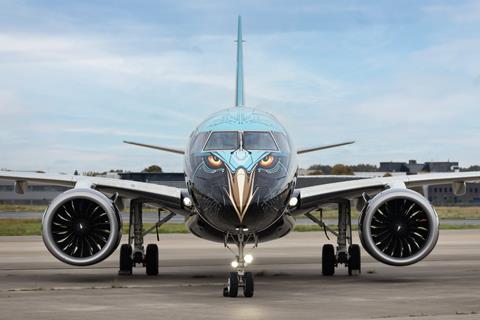
Rodrigo Silva e Souza, Embraer’s vice-president of marketing, echoes Gomes Neto’s view. He says while Embraer is “proud” to be mentioned in such conversations, he downplays the possibility of the airframer launching a platform to compete with the 737 and A320 families.
“It’s very, very good to hear that confirmation from the market,” he says. “But for now, we are more concentrated on our platforms, introducing improvements on our current products, finishing development of the [E190] Freighter. And in the future, the platform that we are more focused on is Energia.”
Embraer is concentrating on selling and improving the products it has already developed – namely, the E2 family and the C-390 – and further studying conceptual 50-seat aircraft powered by next-generation propulsion systems under its Energia initiative.
“We will further our financial performance, generate more cash, and then we’ll be in a better position to talk about the future,” says Gomes Neto.
Embraer, which is forecasting $6-6.4 billion of full-year 2024 revenue, is pushing to generate $10 billion annually by the end of the decade between its business, commercial, defence and aftermarket segments.
C-390 SPREADS WINGS
The Brazilian airframer is perhaps most bullish on the market potential of the C-390 Millennium, a mid-sized tactical transport aircraft that is also available as the KC-390 tanker variant. Embraer is optimistic that the platform’s momentum is picking up.
Since entering service in 2019, six C-390s have been delivered to the Brazilian air force and two KC-390s are in service with the Portuguese air force. Two more units are on the verge of delivery – one to Hungary and another to Brazil.
“We are expecting to end 2024 with 10 units of the C-390 [handed over],” Bosco da Costa Junior, chief executive of Embraer Defense & Security, told reporters during a 18 June press briefing at Embraer’s civil and military aircraft testing facility in Gaviao Peixoto.
Embraer scored big last year by securing a $544 million order from South Korea for a trio of C-390s, representing its first order of the type in Asia-Pacific. And it is in the “final stages” of negotiating a joint deal with the governments of Austria and the Netherlands that would include delivery of nine C-390s and options for a further six.
Da Costa hints at an even larger order that could be announced during the Farnborough air show in July, noting that Embraer is in talks with “more than five” European countries. It has previously disclosed C-390 negotiations with the Czech Republic.
“It is public that Sweden, for example, is about to make a decision on replacement of their old [Lockheed Martin] C-130s,” he says. “We are there; C-390 could be an option in Sweden.” Embraer has been working with Swedish partner Saab to pitch the C-390 to Stockholm, but says ultimately “it is their call”.
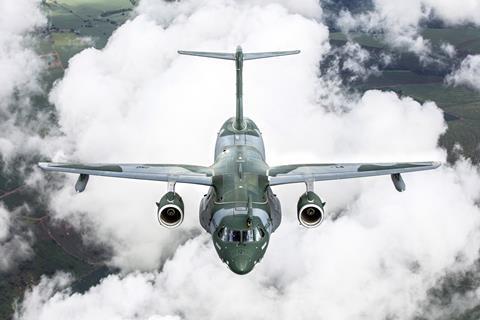
Generally, Embraer is pursuing a strategy of expanding its customer base with NATO’s European member countries. “We would like to access the discussions inside of NATO; we would like to access funding coming from NATO,” da Costa says.
Embraer also views a trio of North African countries – Algeria, Egypt and Morocco – plus South Africa as potential landing spots for the C-390.
“Turkey is a country we are exploring,” da Costa says. “We know the C-390 could have some capabilities for the Turkish air force.”
Notably, he downplays the possibility of landing a C-390 deal with China: “From a defence perspective, we have no relationship of any kind or discussions with China. We are 100% US- and NATO-oriented.”
The big fish for Embraer’s defence segment is landing a contract with the USA, though it is notoriously difficult for overseas manufacturers to break into the US defence market.
“One thing is clear to us – we would like to become a partner of the US government,” da Costa says. “If they have any kind of requirements to have a dedicated version of the C-390 with, for example, air-to-air refuelling boom capabilities, we are ready to collaborate with them on these kinds of solutions.”
The company forecasts a market for nearly 500 military transport jets in the next 20 years, based on the retirement of current legacy platforms. Most of the C-130s and Antonov An-32s currently in service were delivered between 1960 and 1990, seemingly clearing the way for the C-390 to play a prominent role in replacing those ageing fleets.
Da Costa says Embraer is actively negotiating the sale of 80 to 120 C-390s with customers around the world.
Embraer will deliver four C-390s in 2024, though it has capacity to manufacture up to 18 of the jets at its production facility in Gaviao Peixoto; da Costa says Embraer “needs the supply chain to catch up to demand”.
It estimates it will produce six C-390s in 2026 and ramp up to making about a dozen of the jets annually by 2030.
NARROW BODIES, BROAD AMBITIONS
Embraer sees equally fertile ground in global commercial markets, and a potential opportunity to help airlines “add capacity more quickly” with its E-Jet family, Gomes Neto says.
The company is pushing E-Jets as the “perfect solution to complement larger narrowbodies”, he says, “helping airlines open new routes and improving connectivity between small cities and offering a higher frequency of flights”.
Souza calls the E Jet family the most successful narrowbody programme ever behind the 737 and A320, boasting more than 2,200 orders to date. The twinjets are in service in 90 countries.
Embraer had seen E170 and E175 sales lag in the USA due to the pilot shortage that has affected regional carriers most acutely. But it believes demand is back, boosted by American Airlines’ massive order for 90 E175s and options for a further 43 of the type.
“We see more and more customers looking to complement the larger narrowbodies,” he says. “We’ve never seen such a strong demand for this size aircraft as we are seeing today.”
Embraer anticipates that some 230 smaller narrowbody jets will need to be replaced in the USA in just the next two years.
The manufacturer is rolling out a series of upgrades to its E-Jet platforms – including interior, avionics and connectivity improvements – to both the E170 and E175 and the larger aircraft in the E2 family. The company says it will share more specifics during the Farnborough air show.
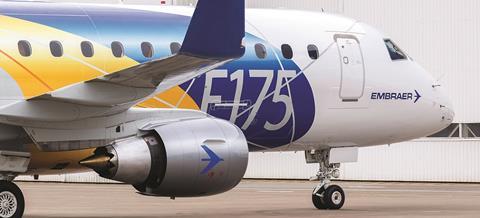
The E175 could enjoy an advantage as a replacement for ageing Bombardier CRJs and older E-Jets, as it is “the only regional jet in production capable to meet scope clause [restrictions]”, Gomes Neto says.
The so-called scope clause refers to maximum passenger and weight limitations on regional carriers flying for the “big three” US carriers – American, Delta Air Lines and United Airlines.
Ironically, Embraer says that clause is holding back development of the heavier E175-E2 – a platform that has been in a holding pattern for several years – as well as US sales of the E190-E2 and E195-E2.
“Unfortunately, this is not in our hands. As we see in the market, we don’t see this changing in the short or medium term,” Gomes Neto says.
“That is a negotiation between US airlines and the pilot associations.” He adds that the E175-E2 project remains indefinitely paused until Embraer sees signs of potential changes to the scope clause limits.
Embraer’s long-rumoured new 70-80-seat turboprop also remains on the table. It would fulfil an obvious role, as Airbus-Leonardo joint venture ATR is the only Western manufacturer of turboprops in that class since De Havilland Canada halted Dash 8-400 production during the Covid-19 pandemic.
But Embraer’s project was paused at the end of 2022 when engine makers were unable to commit to the new powerplant required.
Luis Carlos Affonso, Embraer’s senior vice-president of engineering and technology development, says a clean-sheet turboprop is being considered alongside its Energia project, which is studying four conceptual aircraft powered by hybrid-electric and hydrogen-based propulsion systems. The programme started smaller but is now exploring aircraft capable of carrying up to 50 passengers.
“They are, let’s say, options or opportunities for the future,” he says, declining to be more specific.
Meanwhile, Embraer is looking to break into less flashy markets, including via its first passenger-to-freighter (P2F) conversion. The first example of the E190 Freighter got airborne in April and is on track to be delivered to US lessor Regional One. The aircraft will appear in the Farnborough air show’s static display.
























